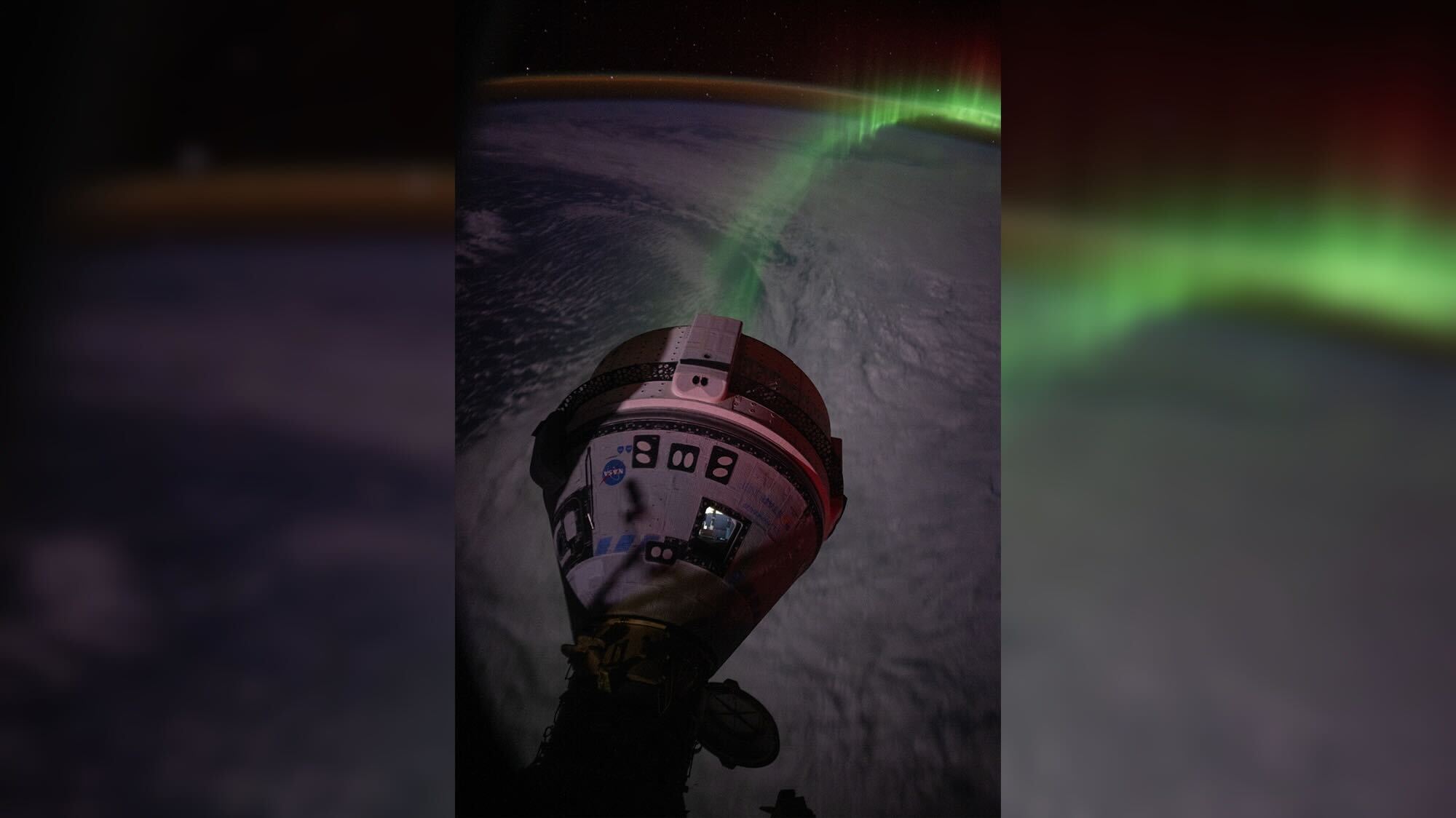
A new image and incredible timelapse show an aurora filling the view as Boeing Starliner astronauts performed a crucial in-flight test in space on Saturday (June 15).
Starliner is currently at the International Space Station (ISS), and the crew was testing the capsule's thrusters because problems had delayed its docking procedures; the first time issues occurred was June 6, when astronauts were on board. While that was happening, NASA astronauts floated into a nearby SpaceX Dragon capsule, also attached to the ISS, and captured a green aurora shimmering behind the Starliner's rear end.
"Starliner was doing some testing today, so we decided to check it out from the Dragon windows," NASA astronaut Matthew Dominick wrote on X, formerly Twitter. "Timing was great for the aurora to line up nicely with Starliner's service module thrusters." Dominick also shared a timelapse of the testing, in which you can see flashlights from the crew lighting up Starliner.
Auroras occur when the sun erupts and sends out charged particles that interact with magnetic field lines surrounding Earth. The particles glow and send out bright colors. The sun is especially active right now as it peaks in its normal 11-year cycle of activity, which is why these shows have been more frequently seen on Earth and in space.

Starliner is co-piloted by veteran NASA astronauts Butch Wilmore and Suni Williams, both former U.S. Navy test pilots. They have stressed repeatedly that the mission is developmental and is designed to shake out major issues before Starliner is fully certified to carry ISS rotation missions, starting no earlier than 2025 with Starliner-1.
Due to thruster-testing and spacewalk-scheduling, the team's expected one-week Crew Flight Test (CFT) mission has doubled in length to depart no earlier than June 22. NASA will hold a media briefing tomorrow (June 18) to discuss the mission's progress.
During the extended mission, "the crew will perform additional hatch operations to better understand its handling, repeat some 'safe haven' testing and assess piloting using the forward window," Steve Stich, manager of NASA's Commercial Crew Program, said in a recent agency statement.
Starliner and Dragon are the two commercial spacecraft NASA supported with funding in 2014 for astronaut missions to the ISS. At that time, both spacecraft were expected to fly no earlier than 2017. However, technical and funding problems delayed that goal. SpaceX sent its first astronauts aloft in 2020 after a successful uncrewed test mission, while Starliner waited longer.
Starliner's first uncrewed ISS test in 2019 failed to reach its destination due to computer glitches. Dozens of such issues and the outbreak of the coronavirus pandemic in 2020 delayed the second uncrewed test to 2022. That test went to plan, but new problems arose. For instance, there were complications with parachute-loading and flammable tape that delayed the launch of CFT to 2023.
CFT's launch was then delayed an extra month, from May 6 to June 5. This was due to various issues with the United Launch Alliance Atlas V rocket, as well as a small helium leak in one of Starliner's thrusters. The leak, among other issues, affected one method of re-entering the Earth's atmosphere and required a careful re-evaluation before the ultimately successful launch.







